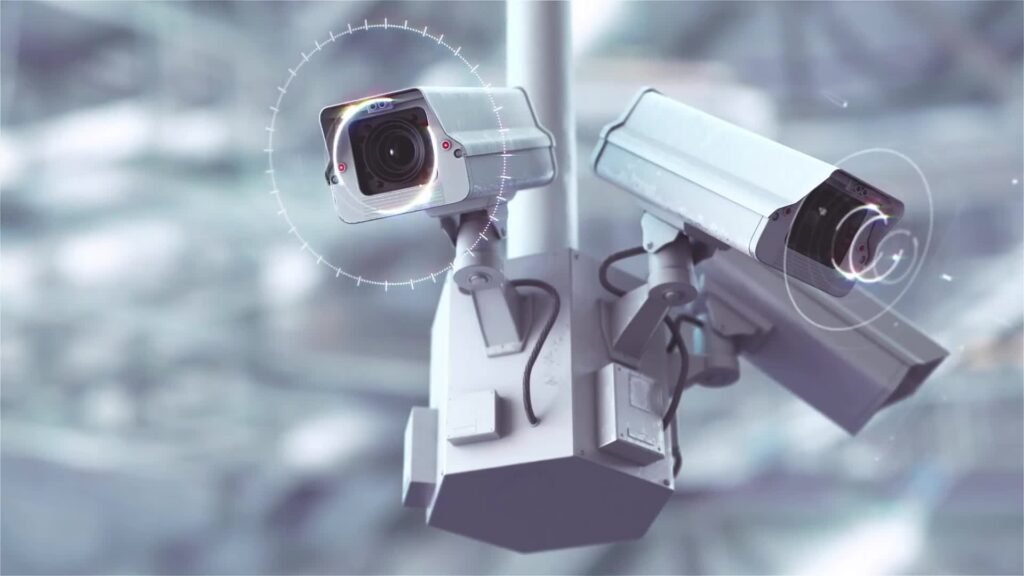Willy Lipkens / Shutterstock) 108 years sounds a long period for any technology to possess the future potential. Its clearly about the time it took automobile locomotion from being an oddity only in wealthy people possession into become standard object used by usual everyone without its real consideration (or some of our cities are still smothered with design maintained until far past their sell-by date railway porn). But with AI (Artificial Intelligence) and ML (Machine Learning), the surveillance landscape is changing more quickly. Emerging technologies are redefining the way security systems work, turning them smarter and more intelligent as well as better proactive.
AI and machine learning are innovative surveillance technology by improving real-time monitoring. Offering the benefit of predictive insights which is making smarter faster online surveillance.
The Evolution of Surveillance Technology
Conventional surveillance systems largely rely on human operators to watch camera video feeds and spot potential risks. Human errors can occur for officers watching hours of large-scale footage daily, details slip through the cracks or they react a bit slower. Even the best security teams can be overloaded by the vast amount of data being produced by today’s cameras.
And that is where we need AI and machine learning. The application of these technologies in surveillance systems allows organisations to automatically identify abnormal behaviours and detect threats or even predict incidents before they occur.
How AI and Machine Learning Work in Surveillance
This is where AI and machine-learning technologies come into play, due to their ability not only to sift through vast amounts of data but use the insights they discover based on it. Video footage, sensor data feeds build patterns and outliers for real-time monitoring in surveillance. With time, machine learning algorithms become better at recognizing patterns of potentially threatening activity (like abnormal motion anomaly movements signals or anomalous and unauthorised access), so this model provides enhanced security just by leveraging its historical data. This is how AI and machine learning are changing the game for surveillance systems:
1. Real-Time Threat Detection
systems track live the video feeds to identify potential threats there and then if a break-in, vandalism or any suspicious activity. Instead of requiring human operators to watch endless hours of footage, AI algorithms look for aberrations in data streams anomalies: out-of-the-ordinary behaviour or movements; things that are not supposed to be where they are. This is how real-time analysis becomes something that can facilitate quicker response and improved security. AI surveillance systems can identify unattended bags at airports or other public spaces.
2. Facial Recognition and Identification
One of the biggest developments in surveillance is facial recognition technology that uses AI. These are the systems that can recognize people instantly by cross-checking their facial features against a library of images depicting thousands/millions faces. Widespread use of this tech in everything from law enforcement to retail security, parking garages & secure areas.
Facial recognition systems powered by machine learning are becoming more and more accurate, even with obscured or poorly lit faces, or when captured in unusual angles. You can guess the company will say that these capabilities could then be applied to help accelerate security operations in real-time by identifying known offenders before setting foot where they shouldn’t or have a person who has gone missing.
3. Predictive maintenance and anomaly detection
Don’t forget the more powerful AI use case in ever scrutinised predictive analytics on surveillance! By analyzing historical data, machine learning algorithms can identify patterns that precede security incidents, such as loitering before a break-in or specific behavioural patterns associated with theft. These standoff hints give security groups a chance to make preemptive move earlier than crimes occur.
Predictive models are based on these summaries of existing patterns and anomalies detection in predictive analytics is the ability for systems to identify activities which do not align with historical data. Real-time alerts for anomalies, may it be a car parked in a restricted area or an individual acting weirdly at some public place, the system helps red flag these issues making us more secure.
4. Automated Object and Activity Recognition
Video feed is recognized and monitored by AI automated surveillance systems that can automatically detect objects or specific activities. For example, these systems can determine the difference between a person versus vehicle at night and even animal in varying light conditions as well as detect running, loitering or trespass behaviours. A necessary feature that cuts down on false alarms, allowing security agents to get notified by the system only when there actually is an alarm.
It is particularly useful in large-scale environments such as airports, stadiums and factories where it becomes challenging for human operators to monitor every corner.
5. Enhanced Privacy Protection
Privacy concern is one of the criticisms or demerits against traditional surveillance systems. This matter can be addressed by AI and machine learning for more sophisticated privacy protection. This means AI algorithms can be used to blur out faces or licence plates in particular zones. This ensures security provision without infringement of privacy rights.
6. Efficient Data Management
Contemporary surveillance systems create a muddle of information that is challenging to keep store up, process and analyze effectively. Machine learning and AI make this process faster by recognising key information to focus on appropriate images. Rather than saving hours of uninteresting video, AI can concentrate on incidents that are relevant and aid security teams.
7. Integration with IoT and Smart Systems
Further, AI-enabled surveillance systems are being converged with an array of other smart technologies such as IoNosphere. This will enable organizations to link their cameras, sensors and access control systems. Using AI in order to form a single intelligent security network. In another example, sensors that detect intrusion into a secured area can initiate surveillance cameras to auto-zoom-in on the spot and display an overall analysis of this occurrence live.
Challenges and Ethical Considerations
AI and ML must be used to better humanity, not the other way around. There is mounting alarm over the potential abuse of facial recognition technology. Bias in AI algorithms (causing misidentification or unfair targeting) is another challenge.
We must create clear policies and ethical principles around the use of artificial intelligence in surveillance. Crucial to this is ensuring our technologies are used responsibly and with fairness, these assurances build trust.
Conclusion
Artificial intelligence (A.I.) and machine learning are completely disrupting the surveillance field, making systems more intelligent than ever before. From automating threat detection to facial recognition and predictive insights. These technologies are enabling organizations exposure ahead of security threats in unprecedented ways. We are likely to see deeper integration of it in surveillance more intelligent systems and sufficiently adaptive technologies. So although we are entering intelligence, security needs and privacy will remain a challenge.

